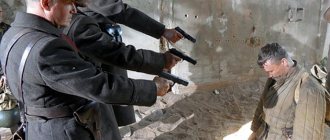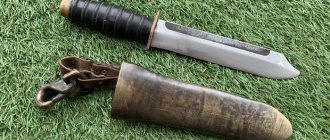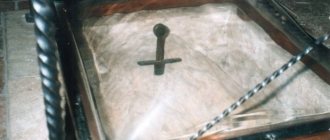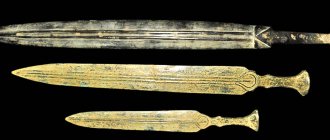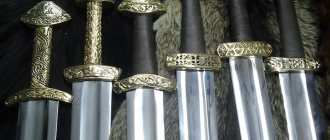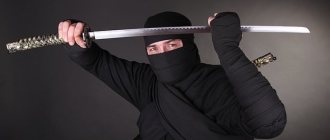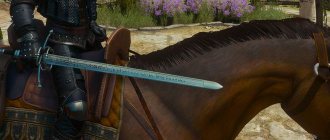What is our life? A game!
Ivan the Terrible, being one of the most controversial Russian tsars, amazed his contemporaries not only with his methods of governing the state, but also with his hobbies. It is known that the sovereign was seriously interested in astrology, compiled maps of the starry sky and believed that the heavenly bodies were capable of predicting a person’s fate. Another activity that brought genuine joy to the king was playing chess.
The death of Ivan the Terrible at chess. Artist Petr Tsepalin - Source: pinterest.ru
It is curious that back in the first half of the 16th century they tried to ban chess in Rus', and the associates of Ivan IV, Metropolitan Macarius and the author of Domostroi, Archpriest Sylvester, advocated for this. The latter dubbed the game “demonic” entertainment and sent curses on everyone who sat down at the chessboard at least once in their life. However, even the threats of his confessor did not stop Ivan Vasilyevich. The Tsar not only enjoyed playing chess himself, but also invited the main guardsman, Malyuta Skuratov, as well as Ivan Glinsky and Boris Godunov, who, however, could not surpass Ivan the Terrible in such an intellectual game, to share the game with him.
According to one version of the death of Ivan IV, the autocrat died playing chess. According to the Englishman Horsey, who left memories of Muscovy, on that fateful day of March 28, 1584, Ivan Vasilyevich could not place the king’s piece on the board - it kept falling. When the king completely lost consciousness, the remaining figures fell to the floor with a roar. Isn't this an omen of the Time of Troubles?
Wide-bladed and narrow-bladed universal tools
- Type 7. Axes with a symmetrically expanding large blade. The cutting edge of the blade of such a weapon is usually significantly beveled towards the shaft. Such axes are found mostly in the north of the country, which is quite logical, because they were borrowed from the Scandinavians. They were popular with Norman and Anglo-Saxon foot soldiers, as some documentary evidence has survived. But at the same time, this type of ax was actively used in everyday life, even more often than for combat purposes. In Rus', such weapons were often found in peasant burials.
- Type 8. Very similar to type 3, but its butt design is different. This is an outdated form of a heavy splitting axe, rarely used in combat conditions. Such instruments were popular as weapons in the 5th–9th centuries, later replaced by more advanced forms.
Clear falcons of the Quiet King
Despite his entrenched nickname, Tsar Alexei Mikhailovich was a gambling man. Just look at his love for falconry, which was known far beyond the royal court even during the Tsar’s lifetime. The ruler himself characterized himself as a “reliable hunter,” that is, real, skillful and knowledgeable.
Falconry of Tsar Alexei Mikhailovich - Source: upload.wikimedia.org
The secretary of the Holstein embassy, Adam Olearius, who left notes on the Russian state of the 17th century, noted that the hunting birds were kept by Alexei’s “uncle,” boyar Boris Ivanovich Morozov. He instilled in his pupil a love of falconry. In addition, the young king understood that this hobby in the eyes of his subjects was traditional for the sovereign and worthy of his high title. True, in contrast to the more usual animal hunting, Alexey chose something more refined: here skill was determined not only by the trophies obtained, but also by the training of the bird of prey, the beauty and scope of its flight.
Education and training of birds, as well as the organization of falconry, cost the treasury 75 thousand rubles a year - an incredible amount at that time! No one except the Tsar himself could enter the territory of the falconry yards without special permission, and Alexei Mikhailovich transferred the management of the entire hunt to the jurisdiction of the Order of Secret Affairs. Often, by the will of the tsar, falconers went with an embassy to distant countries and presented gifts to foreign rulers: Russian birds were always highly valued, and losing a falcon was considered a terrible crime.
In Moscow, entire areas were dedicated to falconry. In addition to the most important one, rightly called Sokolniki, in the middle of the 17th century the Romanovs owned the villages of Pokrovskoye, Izmailovo, Semenovskoye and Cherkizovo. In 1661, Alexei Mikhailovich ordered the construction of another summer palace on the right bank of the Yauza. There was also a vast field for falconry, since the proud birds needed open space, and felt helpless in the forests.
Battle ax in Rus'
Slavic tribes began to use battle axes long before the invention of writing. Since the neighbors of the places where the Slavs lived were not inclined towards a peaceful life, every man had to have a weapon.
According to legends, ax blades were sharpened so that you could shave your head with them. And the Slavs learned to use an ax in construction or protecting their farms from childhood.
Data from archaeological excavations indicate the influence of Slavic axes on Scandinavian ones, or vice versa, depending on which sources you believe. In any case, the Russian battle ax had much in common with the weapons of the Scandinavians.
A right angle, a downward bevel of the blade, a small area of the cutting part itself, features of both weapons. From a military point of view this is justified. It was almost useless to hit a body wrapped in furs, and even with chain mail, with a wide blade.
The narrow blade of the warrior's battle ax penetrated almost any defense.
A cleaver was used effectively for the same reason. The dull blade did not need to penetrate the armor; it crushed the bones under the armor.
Many folk legends tell about lumberjacks who were chopping wood and were caught by enemies and robbers, and it was the cleaver who helped them fight off.
In the north of Rus', battle axes were used as the main weapon for a long time. The warriors of Novgorod the Great armed themselves with them “according to the behests” of their fathers and grandfathers. In the northeast, these weapons were also widely used.
Archaeologists excavating battle sites find several axes for each sword.
These are mainly models of “beard-shaped” axes, with an extended heel and lower part of the blade.
After the beginning of the Tatar-Mongol yoke, the ax remained perhaps the only means of protection from both wild animals and robbers. Southerners enriched the arsenal of these weapons with coinage. This sample had a small blade, elongated and balanced by an equally elongated butt.
Royal Doctor
Having visited European countries during the years of the Great Embassy, Peter I returned to his homeland not only with the desire to create a powerful fleet and radically change the life of his subjects, but also with a keen interest in medicine, especially dentistry.
Peter the Great performs tooth extraction - Source: vialdenta.ru
While in Holland, the king attended lectures on anatomy at the University of Leiden, learned to open abscesses, make surgical incisions and bandage wounds. According to the memoirs of contemporaries, Peter I eventually became so skillful in treating teeth that he tried to test the acquired skill on literally everyone - from courtiers to ordinary residents of the capital.
The sovereign even constantly carried with him two sets of instruments: a mathematical one and a surgical one with dental forceps. The Kunstkamera (the first museum founded by Peter the Great) still contains the “Register of Teeth,” which was removed personally by the Tsar. The number of “exhibits” exceeds 60 pieces!
Diagram of the Kunstkamera building - Source: upload.wikimedia.org
It is worth noting that before Peter, dentistry actually did not exist in the Russian state. There were only so-called dentists, specialists capable of removing teeth and placing primitive fillings. However, people did not trust them too much. The situation began to change when Peter the Great, seized by a new hobby, brought the Dutch doctor N.L. to Russia. Bidloo, who became the first head of the Moscow Hospital School. In 1718, the tsar opened an “instrument hut” for the manufacture of surgical instruments, including dental ones.
A soldier with the soul of an artist
It is known that the future Emperor Nicholas I was not prepared to rule the state - he was the youngest heir and, if not for the abdication of his brother Constantine in 1825, he would never have become a monarch. According to tradition, Nikolai Pavlovich received a military education, but there was a hobby in his life that, at first glance, had nothing to do with the army and navy.
Image of Nicholas I and Tsarevich Alexander Nikolaevich in the studio of the artist G. Villevalde - Source: hermitagemuseum.org
Since childhood, Nikolai loved to draw. First, he asked teachers to draw something on paper, and then he happily colored the drawing and gave it to someone close to him. At the age of seven, Nikolai Pavlovich began taking separate painting lessons, and his first teacher was the artist “on historical themes” I.A. Akimov, with whom the future ruler studied twice a week and made great progress.
Already in his mature years, Nicholas I will decide to master the art of engraving, and this time he will take lessons from O.A. Kiprensky (creator of the famous portrait of A.S. Pushkin). Having succeeded in this technique, Nikolai Pavlovich released a series of engravings “Uniforms of Russian troops”, carefully drawing out every detail of the military uniform: cuffs, collars, buttonholes. In addition, in 1829, the emperor created several watercolor works on the theme of the Italian Guard and pencil drawings depicting women in full cuirassier uniform.
Staff officer of the artillery team and sailor of the fin company of the Guards crew, 1844-1855. — Source: navyparade.mil.ru
One of Nicholas I’s favorite pastimes was creating sketches of uniforms for the Russian army with his own hands. The emperor's enthusiasm was so great that he could work on them day and night, refining and improving them. To do this, he even had to get acquainted with the basics of sewing and participate in the selection of fabrics and accessories for military uniforms. By the way, this hobby was also inherited by his son Alexander II, who made a significant contribution to changing the uniform of Russian soldiers and officers during the Great Reforms.
